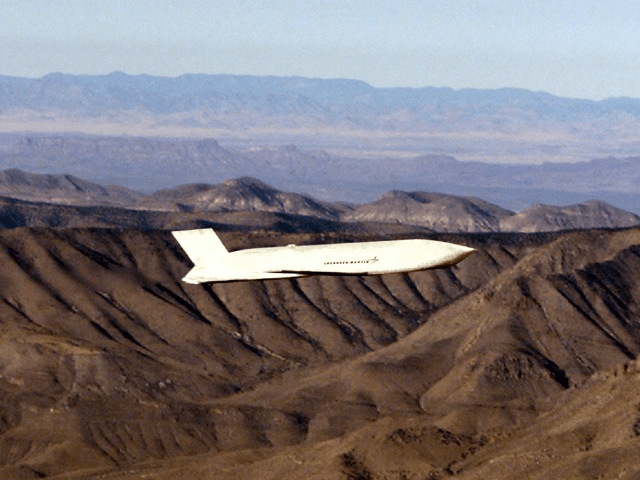The U.S. and Japan have equipped their warplanes with long-range Joint Air-to-Surface Standoff Missiles (JASSM), ideal weapons for taking out targets such as North Korea’s mobile missile launchers from great distances.
South Korean defense officials described the move as preparation for “another strategic provocation, such as a sixth nuclear test.”
Lockheed Martin touts its JASSM cruise missile as “designed to destroy high-value, well-defended, fixed and relocatable targets,” while keeping aircrews “well out of danger from hostile air defense systems.”
In other words, the JASSM can dump 2,000 pounds of explosives in the enemy’s lap from about 200 miles away, zipping past dense air defense networks that would be extremely dangerous for pilots to navigate.
According to South Korean media reports, officials have deployed at least ten of these missiles to the Kunsan Air Base, about 150 miles from Seoul along the west coast of Korea, where American F-16 fighters are based. The precise JASSM variant sent to Kunsan has not been disclosed to the public.
Business Insider reports that Japanese F-35 fighters will also be equipped with a long-range weapon, the Joint Strike Missile (JSM) designed by Kongsberg Defense Systems of Norway. The JSM is smaller, packing a 500-pound warhead, but also excels at taking out heavily defended targets from long range.
“The JSM can sit inside the F-35 and fly almost 200 miles before hitting a moving target, meaning an F-35 could take out a North Korean mobile missile launcher without even getting close to the country,” Business Insider notes.
Elsewhere in the story, it is speculated that these long-range weapons can target North Korean nuclear weapons infrastructure and command-and-control facilities. Also, Japan might find JSMs handy if enemy forces (i.e. China) decide to occupy territory claimed by Japan (i.e. islands in the South or East China Sea).
Most of what South Korean and U.S. media sources have reported about the purpose of these missiles is speculative, although one South Korean official talked about holding a live-fire drill so North Korea can see what these cruise missiles are capable of.
The U.S. has made efforts in the past to let North Korean leaders and military officers know that they will be personally targeted if they start a war. There is even a name for the protocol, the Korea Massive Punishment and Retaliation Plan (KMPR.)

COMMENTS
Please let us know if you're having issues with commenting.